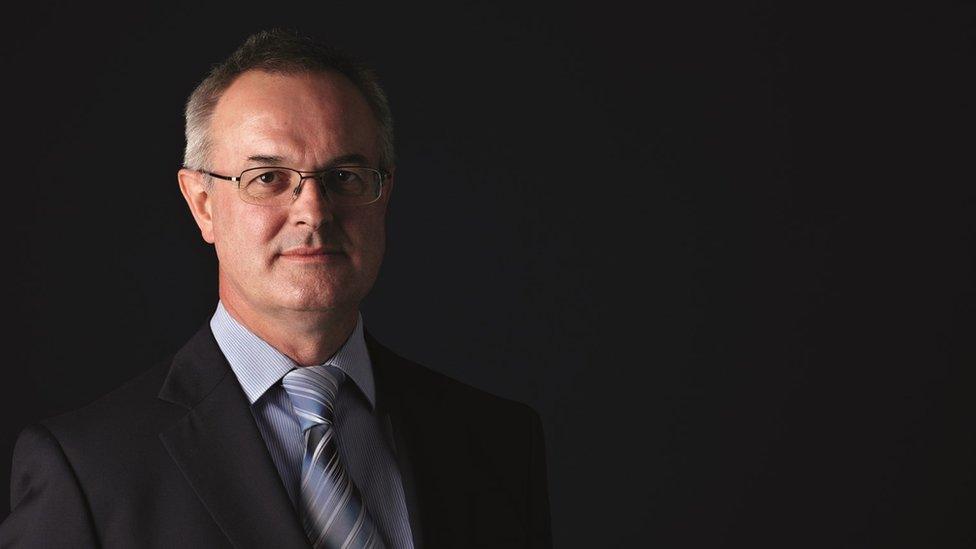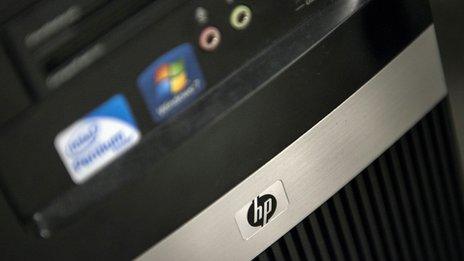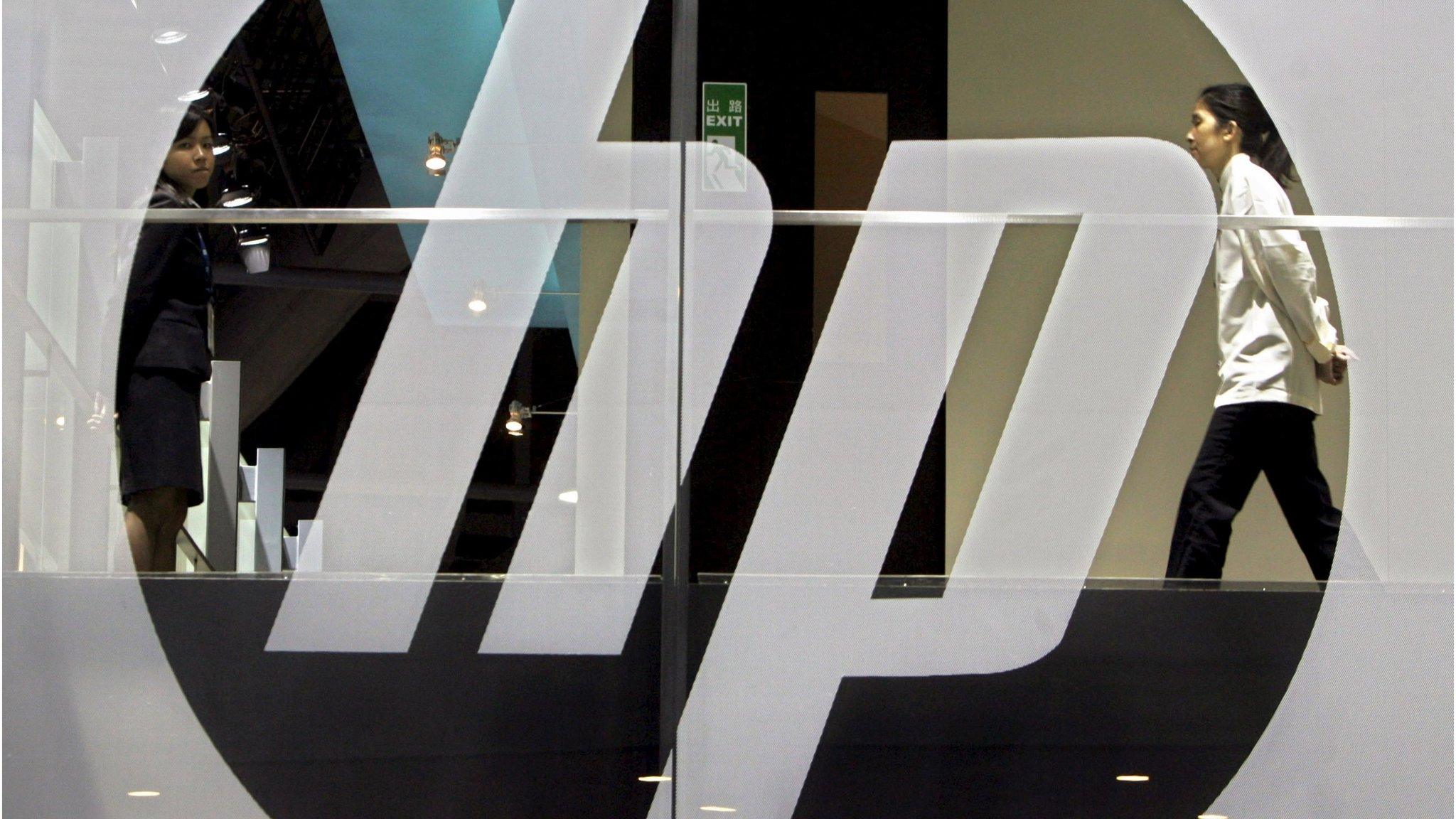Micro Focus - from takeover target to FTSE 100 newcomer
- Published

Micro Focus servers - growing rapidly through acquisition
Almost exactly five years ago the UK software group Micro Focus was on the verge of being taken over.
Valued at just over £500m the company was being wooed by a clutch of private equity firms.
But "market volatility" killed the talks. Since then Micro Focus's fortunes have changed dramatically.
Last week it joined the FTSE 100 and on Thursday bought the software arm of Hewlett Packard Enterprise to become one of the UK's largest tech firms.
To complete the irony, the collapse of the Micro Focus talks in 2011 coincided, almost to the day, with Hewlett-Packard's disastrous $11bn takeover of rival software group Autonomy.
The remains of Autonomy, massively written down, are among the assets that Micro Focus is now buying for $8.8bn (£6.6bn) from Hewlett Packard Enterprise - a spin-off from HP's computer and printer business.
It is the latest and biggest purchase on Micro Focus's shopping list, drawn up by executive chairman Kevin Loosemore.
As part of the shopping spree, the Berkshire-based company has bought two other US software companies - Attachmate for $1.2bn in 2014 and Serena Software this year for $540m.
Mr Loosemore, who took the helm in 2011, said: "I contacted HPE in about February this year. We are in regular contact with most players in the mature software space, it's what we do, and HPE had just separated from HPI (Hewlett Packard Inc) at the back end of last year and I was personally intrigued as to what their new strategy was going to be."

Kevin Loosemore has led Micro Focus on an acquisition spree in recent years
Old tech - new tech
The core of Micro Focus's business is this "mature software space", specifically linking old software technology to new.
So for instance, it can make old cash machines talk to the latest banking software, or connect a supermarket's old inventory control system to the latest generation of mainframes.
These businesses can be made to generate huge amounts of cash. Since 2011 Micro Focus has delivered annual compound shareholder returns of 39%. And its stated strategy is to deliver 15-20% returns to shareholders each year.
That explains why Micro Focus has little problem funding its acquisitions.
But its rise from mid-cap company to FTSE entrant and the near-doubling of its share price in the last year has taken many by surprise, so much so that many of the top technology analysts in London simply did not cover the stock.
One analyst said: "I think many have steered clear of it because it is a complex company, a kind of portfolio business and until recently was not considered big enough. But that will all change now."
However, Paraag Amin, technology analyst from Peel Hunt, has been watching the company for almost ten years. He explained that its strategy has been to buy up software that is "mature", i.e. no longer growing and about to be superseded by new products.
Maturing software
Software companies that were developed in the nineties have been "maturing" over the last five years and have fueled Micro Focus's dramatic acquisition programme and rapid expansion.
"Micro Focus has realised that as technologies mature and go into decline they, as a management team, can make them more profitable by supporting them and making them work in the new environment. You could call them asset managers of software products.
"For instance, Autonomy, which made up about 6% of HP's business will now make up over half of Micro Focus's business. But it is hoping it can take its profit margins from the 20-30% range up to 40% which is the average for Micro Focus's businesses."
Asked whether Micro Focus had the skill to hold together such a rapidly expanding group of companies, Mr Amin said: "It's exactly what they are good at, taking in declining companies, turning them round and supporting them."
- Published1 October 2015

- Published16 September 2015

- Published22 August 2011
